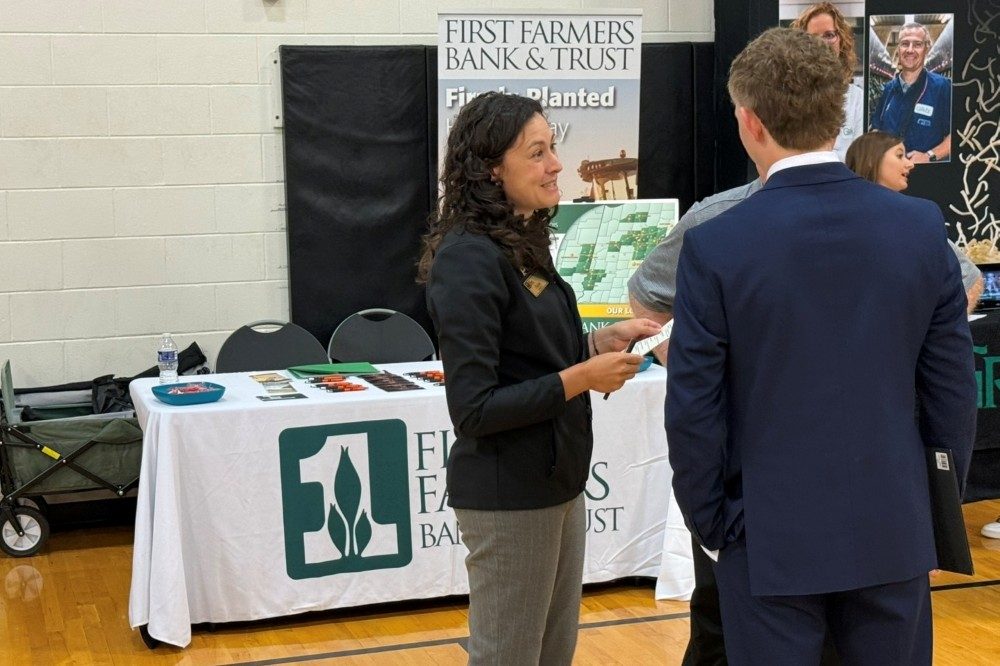
The job market for new college graduates with degrees in food, agriculture, renewable natural resources and the environment remains strong according to a new report from Purdue University’s College of Agriculture and the U.S. Department of Agriculture’s National Institute of Food and Agriculture (NIFA).
The Employment Opportunities for College Graduates in Food, Agriculture, Renewable Natural Resources and the Environment report for 2025-30 forecasts about 104,766 job openings annually across four broad job clusters: business and management; science and engineering; food and biomaterials production; and education, communication and governmental services. The estimate was developed using Bureau of Labor Statistics data and web-scraped data on FARNRE position announcements.
“Agriculture offers outstanding career opportunities for those committed to ensuring a safe, nutritious and affordable food supply,” said Dr. Bernie Engel, the Glenn W. Sample Dean of Agriculture at Purdue. “It’s a field where passion meets purpose, and the future looks exceptionally bright. As this report shows, today’s agricultural careers are powered by innovation — from data analytics and automation to sustainable engineering and precision technologies.”
Employer demand for graduates with FARNRE-aligned skills is expected to dramatically exceed the number of available FARNRE majors. Of the 104,766 projected annual openings, graduates earning FARNRE degrees (associate degrees through graduate/professional degrees) will make up 48% (50,057) of the supply, while allied disciplines will contribute 25% (25,802). The remaining 27% (28,907) of hires will come from other fields, including about 10% of the available positions filled by candidates without a degree.
“Across the board, employers are looking for graduates who can integrate data, technology and leadership into decision-making,” said Christine Wilson, senior associate dean and director of academic programs in Purdue’s College of Agriculture and lead author of the report. “These trends reinforce the value of agricultural business, food and science education and degrees in preparing students for meaningful, high-impact careers.”
The breakdown of available jobs in the four major clusters is as follows:
- Business and management (41%) — Includes finance, risk management, supply chain, e-commerce, consulting and data analytics roles across the food and agriculture value chain
- Science and engineering (21%) — Encompasses agronomy, plant and animal sciences, biological and agricultural engineering, food science, automation, and water and soil systems
- Food and biomaterials production (19%) — Covers production management, precision agriculture, biomaterials, bioenergy and environmental management
- Education, communication and governmental services (19%) — Includes agricultural educators, communicators, policy specialists and data analysts serving in local, state and national organizations and government roles
“The future of agriculture depends on building a workforce of professionals from every discipline and background — rural, urban and suburban — who bring technical expertise and global awareness to the complex challenges of feeding a growing world,” said Jay Akridge, co-author and Trustees Chair Professor of Teaching and Learning Excellence and professor of agricultural economics at Purdue.
This tenth report in the series, initiated by the USDA in 1980, includes associate degree holders for the first time. The study also features new job subcluster and geographic breakdowns, allowing a more refined look at available FARNRE positions for new graduates. In addition, a more rigorous method using web-scraped data of position announcements was employed to give a more comprehensive assessment of available positions.
The report was co-authored by Wilson; Akridge; Stephanie Martin, senior data analyst in the College of Agriculture; Joshua Strine, graduate student in agricultural economics at Purdue; and Brady Brewer, associate professor of agricultural economics at Kansas State University.
For more details and access to the full report, visit purdue.edu/usda/employment.
Written by: Nyssa Lilovich, Purdue Agricultural Communications

